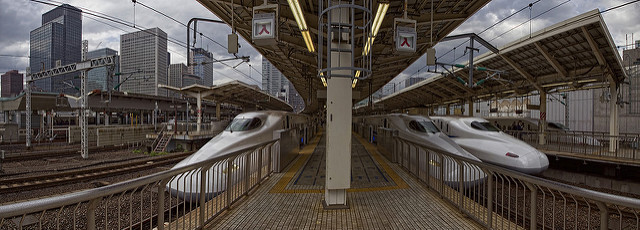Since the invention of the locomotive more than 200 years ago, the world’s rail systems have come a long way. Today, they are faster, more efficient, and more promising than ever.
While the first commercially successful locomotive was built in 1812, according to Futurism, high speed rail lines didn’t make an appearance until more than a century later, in 1933, as About reports. These streamliner trains transported people and cargo at a laudable 80 mph, but were soon outpaced by Japanese bullet trains launched in 1964. Averaging speeds of 135 mph, the shinkansen quickly became the gold standard of high speed rail, and countries around the world have been scrambling to keep up ever since.
How They Work
Throughout their history, high speed trains have typically relied on two sources of power: diesel and electricity. The fastest diesel-powered engine flew by at 125 mph in 1976 as part of Britain Rail’s High Speed Train fleet. Diesel-fueled trains are still in use today, often in conjunction with electric engines, making them ideal for railways that span both urban and rural environments.
In 2007, France claimed the title for the world’s fastest conventional electric train, which topped out at more than 357 mph, but with average operational speeds at a more modest 200 mph. Even this pales in comparison to the maglev (magnetic levitation) lines that connect cities in Asia and Europe. The Shanghai Maglev reaches average operational speeds of more than 267 mph, as railway-technology.com explains, making it the fastest commercially operated line in the world. How does it work? The train is lifted millimeters off the ground and travels along a magnetic guideway, maximizing velocity by reducing friction.
Where They Go
As part of the nation’s reconstruction following World War II, Japan led the charge in developing high speed rail, and continues to do so today. The more than 1,500 miles of shinkansen lines crisscrossing the country carry passengers at 185 mph, and have dramatically transformed the country’s economic and geographic landscape, according to Time. China and Taiwan have also invested significant money and resources into their respective high speed rail networks, with China’s more than 12,000 miles of high speed tracks earning it the title of largest rail network in the world. On the European continent, France, Germany, and Spain boast the largest networks.
Higher gas prices and increasingly dense urban populations have driven up Asian and European investments in high speed rail, yet the costs of development have thus far proven prohibitive for many American companies. How costly are we talking? In Spain, to use just one example, the price tag of building a single mile of rail is $22 million.
The United States
The United States’ system pales in comparison to the speed and scope of those in Asia and Europe. First of all, our country classifies any train traveling at 90 mph or above as “high speed,” and even worse, Amtrak’s Acela is the only rail network in operation that comes even close, averaging just 85 mph due to track limitations. But this could soon change: from California to Washington D.C. there are plans in the works for faster and longer lines, the earliest of which could be completed by 2020, according to US High Speed Rail Association.
As the global network of high speed rail lines has continued to expand and evolve, Midwest Industrial Supply, Inc. has followed suit, developing the most effective, cost-efficient, and environmentally sound solutions to keep railroads running smoothly. Products like Glidex Synthetic Organic® switch lubrication keep trains safe and on track year-round, offering sustained protection from harsh weather conditions.
Over the last several years, the United States has recommitted to expanding its high-speed rail system — and Midwest will be there every step of the way.
(Image credit: tokyoform/flickr)


